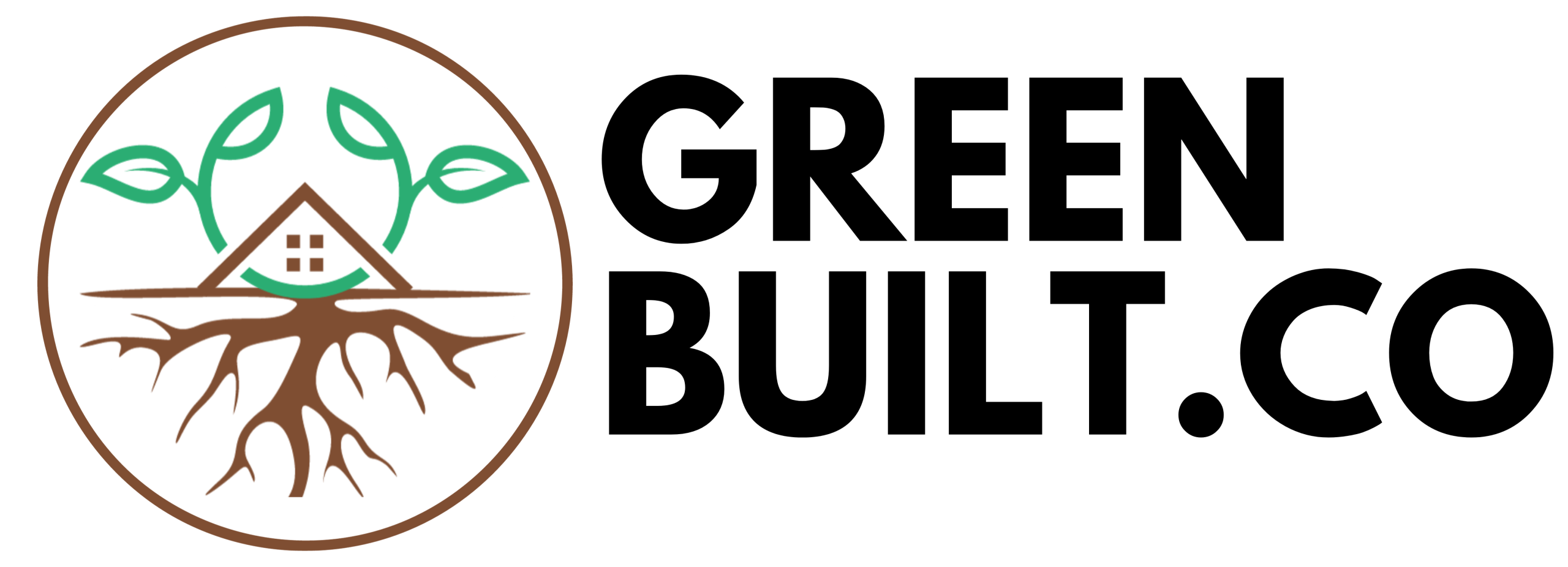This post on lambs ear companion plants may contain Amazon affiliate links. Please see the disclaimer page for more details.
Lambs Ear (Stachys byzantina), known for its soft, woolly leaves, is a popular perennial in gardens. Its unique texture and silvery-green foliage make it a striking addition to any planting arrangement.
When considering companion plants for Lambs Ear, it’s essential to choose species that complement its growth habits and environmental needs.
Good Companion Plants for Lambs Ear
Here are good companion plants for Lamb’s Ear (Stachys byzantina) and why they make suitable companions, along with their growing requirements:
| Plant Type | Name | Seeds |
|---|---|---|
| Flower | Black-Eyed Susan | Check Price On Amazon |
| Flower | Coneflower | Check Price On Amazon |
| Herb | Lavender | Check Price On Amazon |
| Perennial | Allium | Check Price On Amazon |
| Flower | Shasta Daisy | Check Price On Amazon |
| Herb | Lady’s Mantle | Check Price On Amazon |
| Flower | Yarrow | Check Price On Amazon |
| Flower | Roses | Check Price On Amazon |
| Perennial | Catmint | Check Price On Amazon |
| Flower | Sedum | Check Price On Amazon |
Black-Eyed Susan (Rudbeckia hirta)
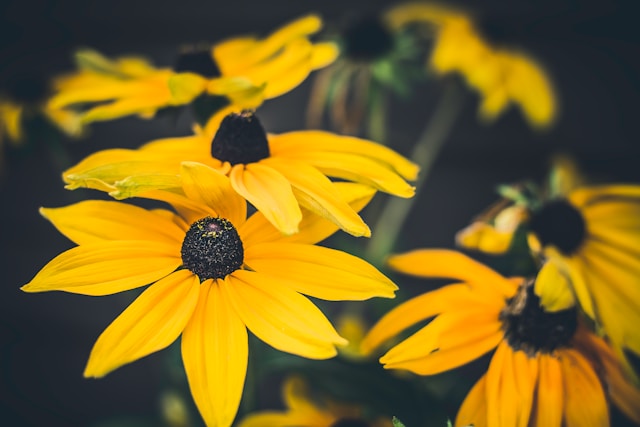
Black-Eyed Susans are excellent companions for Lamb’s Ear due to their contrasting textures and colors. The bold yellow flowers complement the soft, silvery foliage of Lamb’s Ear.
USDA Zones: 3-9
Soil: Well-draining, average to poor soil
Height/Spread: 2-3 ft tall, 1-2 ft wide
Growing Conditions: Full sun, drought-tolerant once established
Coneflower (Echinacea spp.)
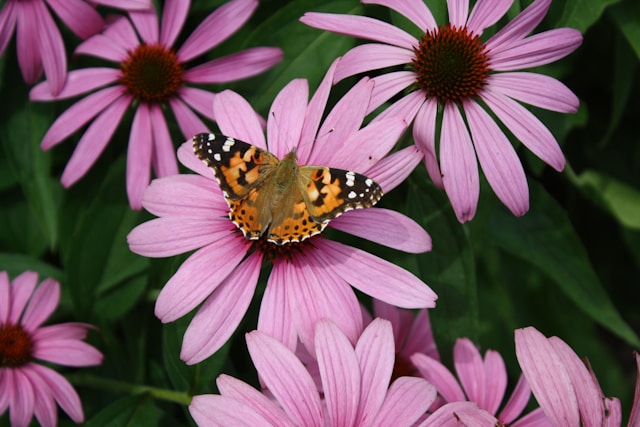
Coneflowers have a similar drought-tolerant nature and complement the soft texture of Lamb’s Ear with their coarse, hairy foliage and vibrant purple or pink flowers.
USDA Zones: 3-9, depending on species
Soil: Well-draining, average to dry soil
Height/Spread: 2-4 ft tall, 1-2 ft wide
Growing Conditions: Full sun, drought-tolerant
Lavender (Lavandula spp.)

Lavender’s aromatic foliage and purple flower spikes pair beautifully with the silvery Lamb’s Ear. Both plants thrive in well-draining soil and full sun.
USDA Zones: 5-9, depending on species
Soil: Well-draining, sandy or gravelly soil
Height/Spread: 1-3 ft tall, 1-2 ft wide
Growing Conditions: Full sun, drought-tolerant
Allium (Ornamental Onion)
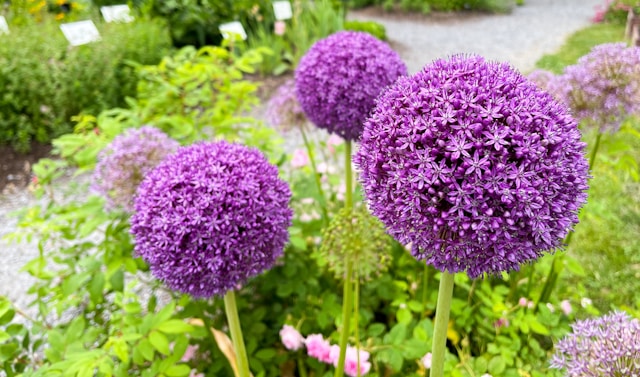
Alliums add a whimsical touch with their globe-shaped purple or white flower heads, contrasting nicely with the soft texture of Lamb’s Ear.
USDA Zones: 4-10, depending on species
Soil: Well-draining, average to rich soil
Height/Spread: 6 inches to 4 ft tall, 6-12 inches wide
Growing Conditions: Full sun
Shasta Daisy (Leucanthemum x superbum)

The classic white daisy flowers of Shasta Daisy provide a cool contrast to the warm tones of Lamb’s Ear’s foliage.
USDA Zones: 5-8
Soil: Well-draining, average to fertile soil
Height/Spread: 2-4 ft tall, 1-2 ft wide
Growing Conditions: Full sun
Lady’s Mantle (Alchemilla mollis)

Lady’s Mantle has a similar soft, velvety texture to Lamb’s Ear, and its chartreuse flowers complement the silvery foliage.
USDA Zones: 4-7
Soil: Well-draining, average to fertile soil
Height/Spread: 1-2 ft tall and wide
Growing Conditions: Full sun to partial shade
Yarrow (Achillea millefolium)

Yarrow’s ferny foliage and flat-topped flower clusters in shades of yellow, red, or white provide an airy contrast to Lamb’s Ear.
USDA Zones: 3-9
Soil: Well-draining, average to poor soil
Height/Spread: 2-3 ft tall, 1-2 ft wide
Growing Conditions: Full sun, drought-tolerant
Sure, let’s continue with the remaining plants on the list:
Roses (Rosa spp.)

Roses make excellent companions for Lamb’s Ear due to their contrasting textures and colors. The soft, silvery foliage of Lamb’s Ear provides a beautiful backdrop for the vibrant rose blooms.
USDA Zones: Varies by species, typically 4-9
Soil: Well-draining, fertile soil
Height/Spread: Varies by variety, from 2-6 ft tall and wide
Growing Conditions: Full sun, at least 6 hours of direct sunlight per day
Catmint (Nepeta spp.)
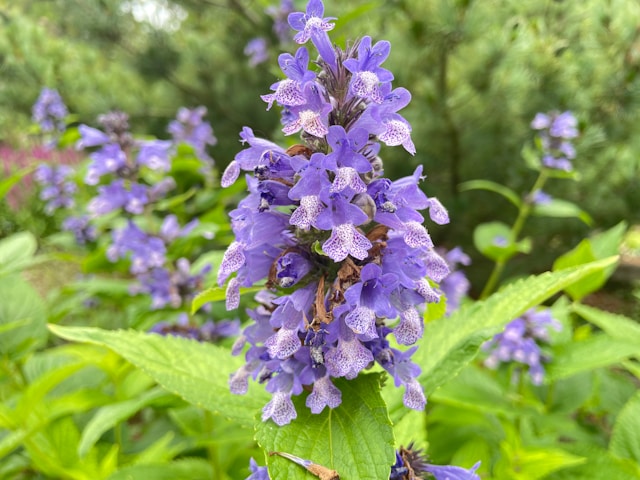
Catmint’s aromatic, gray-green foliage and spikes of blue or purple flowers complement the soft texture of Lamb’s Ear. Both plants have similar drought-tolerant qualities and thrive in full sun.
USDA Zones: 3-8, depending on species
Soil: Well-draining, average to poor soil
Height/Spread: 1-3 ft tall, 1-2 ft wide
Growing Conditions: Full sun, drought-tolerant once established
Sedum (Stonecrop)
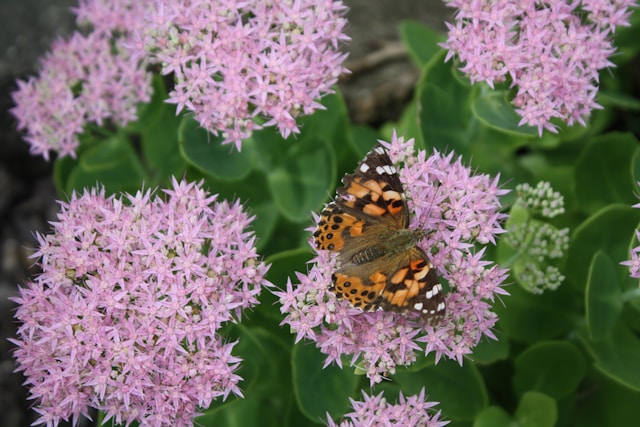
Sedums are excellent companions for Lamb’s Ear due to their succulent foliage and contrasting flower colors. The low-growing habit of many sedum varieties also makes them a good groundcover companion.
USDA Zones: 3-9, depending on species
Soil: Well-draining, average to poor soil
Height/Spread: 6 inches to 2 ft tall, 1-2 ft wide
Growing Conditions: Full sun, drought-tolerant
Bad Companion Plants for Lambs Ear
| Plant Type | Name |
|---|---|
| Vegetable | Tomatoes |
| Vegetable | Peppers |
| Flower | Hostas |
| Flower | Impatiens |
| Flower | Begonias |
| Vegetable | Cucumbers |
| Vegetable | Melons |
| Flower | Ferns |
| Flower | Hydrangeas |
| Vegetable | Squash |
Lambs ear companion plants vegetables
When it comes to vegetables, Lambs Ear can be beneficial due to its ability to deter certain pests. However, its preference for dry conditions makes it incompatible with moisture-loving vegetables.
| Vegetable | Compatibility |
|---|---|
| Carrots | Good |
| Spinach | Good |
| Lettuce | Moderate |
| Onions | Good |
| Potatoes | Moderate |
| Beans | Bad |
| Peas | Bad |
| Cabbage | Good |
| Broccoli | Good |
| Cauliflower | Good |
Scientific References
For more in-depth information, these scientific sources provide detailed insights into companion planting and the specific needs of Lambs Ear:
- Khudr, M. S., Fliegner , L., Buzhdygan, O. Y., & Purkiss, S. A. (2020). Host availability, repulsive companion planting, and predation interact and shape how a parthenogenetic aphid population responds to a stratified ecological challenge. In Preprints. https://doi.org/10.20944/preprints202001.0140.v1
- Conboy, N. J. A., McDaniel, T., Ormerod, A., George, D., Gatehouse, A. M. R., Wharton, E., Donohoe, P., Curtis, R., & Tosh, C. R. (2019). Companion planting https://doi.org/10.1371/journal.pone.0213071
Zaki Infitar is the driving force and creative mind behind GreenBuilt.co. As a self-taught gardener with an unwavering passion for all things green, Zaki’s journey into the world of gardening is a testament to his dedication and love for nature.
